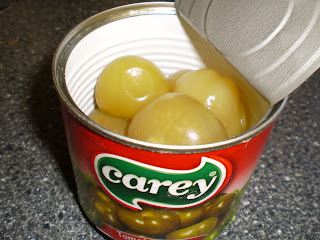




A couple of weeks ago I attended a fascinating discussion of Mexican food at the British Museum, part of a series of events linked to the current Moctezuma exhibition. Amongst the panel chaired by Fay Maschler was travel writer Fiona Dunlop, renowned Mexican chef and restaurateur Enrique Olivera, Wahaca's Tommi Miers and a new hero of mine, one of the world's greatest authorities on Mexican cooking Diana Kennedy.
I'm a bit of a twat when it comes to Mexican food, having spent a semester of my Spanish degree as an exchange student in Puebla. Whilst fellow linguists tucked into Currywurst in Leipzig I was decimating my student loan and occasionally my bowels, eating and drinking my way across southern Mexico like a marauding filibuster. London's current burrito craze really pisses me off, and shamefully I've found myself berating the staff at Daddy Donkey for their prices and lack of corn tortillas.
Anyway, despite my professed knowledge the talk was my first encounter with a woman who has spent 45 years researching and documenting Mexico's regional cooking. She's written several books, the most famous of which 'The Cuisines of Mexico' is a bible for all Mexicophiles. So great is her contribution to Mexican gastronomy that she was awarded The Order of the Aztec Eagle, the highest honour afforded to foreigners in Mexico.
Listening to her speak was a privilege, as she rolled out the Nahuatl names of rare ingredients. Fielding questions from the audience she instantly reminded one Mexican lady of the name of a particular salt found on the shores of Mexico's highland lakes called Tequesquite that her Grandma used to use to season beans. When someone got her started on Tamales she offered to continue the conversation after the talk for a few hours more.
What came across was a true devotion to the culture of her adopted country and a strong dedication to ensuring the survival of one of the world's richest culinary traditions in the face of corrupting global influences (dietary habits from above the border and genetically modified maize were amongst those highlighted). The enthusiasm of all those participating was moving, with Enrique Olivera speaking about current trends in Mexican alta cocina and Tommi Miers explaining her brand of Mexican food with a British accent.
By the end of the discussion when the panellists had shared their most memorable Mexican eating experiences and generous samples of Wahaca's new menu had been consumed, I was reaching for my molcajete, the lava rock mortar which makes a salsa supreme.
Sunday lunch was an adaptation of a taco classic 'Barbacoa de Cabeza' slowly cooked cow's head. On offer at £2.60 a kilo in Waitrose and for ease, I just used ox cheeks 'cachete'. There are various variations of barbacoa - slow roasting, steaming or braising and with various meats (mutton 'borrego' is my favourite). Again this is the easiest one, braising on a hob. If you were a purist you'd do it wrapped in maguey (agave) leaves and buried with hot rocks...one for the summer.
As well as rich tender meat you get an incredible beef stock from simmering the cheeks for so long, which in Mexico is served as consomé before the tacos.
I made a salsa verde to go with it with tomatillos (called tomates verdes in Mexico). Despite the name they're unrelated to tomatoes and are a relation of the cape gooseberry. It's pretty hard to get fresh ones over here, though Cool Chile have them occasionally, so I used tinned.
Carne
2kg Ox cheeks
2 Onions (halved)
8 Cloves of garlic
1 Bay leaf
10 peppercorns
salt to taste
Salsa Verde
500g tinned tomatillos
2 jalapeño chilis or serranos if you can get them (deseeded)
1/2 onion
2 cloves garlic
salt to taste
To Serve
30 Corn tortillas
Finely chopped onion, coriander and slices of lime
- Place the ox cheeks, the onions, the garlic, the bayleaf and the seasoning in a large cooking pot. Cover with water and bring to the boil. Reduce heat and simmer gently for 3 hours.
- When the meat is tender and falling apart remove from the broth and shred. According to taste it can be eaten as it is or fried to give a crispy exterior. I fried mine.
- To prepare your salsa verde, on a skillet roast the chile and onion until blistered and tomatillos until blistered and bubbling. Blend with the garlic and salt in a molcajete (if you've got one) or a blender, adding water if necessary to achieve a thick yet pourable consistency. Alternatively you can make the salsa (cruda raw) without charring the ingredients.
- Serve shredded meat with corn tortillas heated on the skillet (wrap in foil or a clean tea towel to keep warm) bowl of salsa verde, chopped onion, coriander and limes.
In terms of ingredients I'd recommend Casa Mexico, Azteca (website only in Spanish) and Cool Chile.